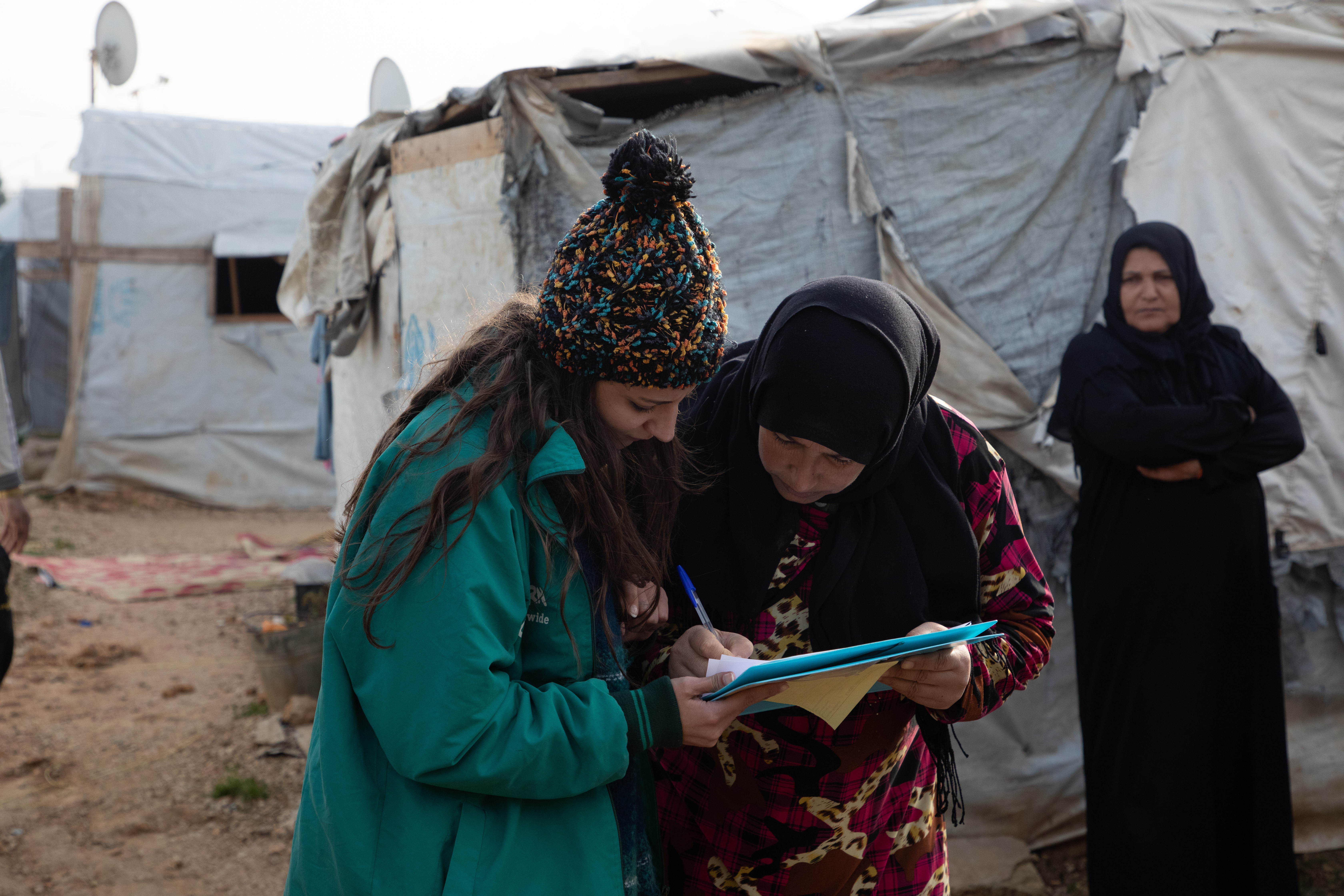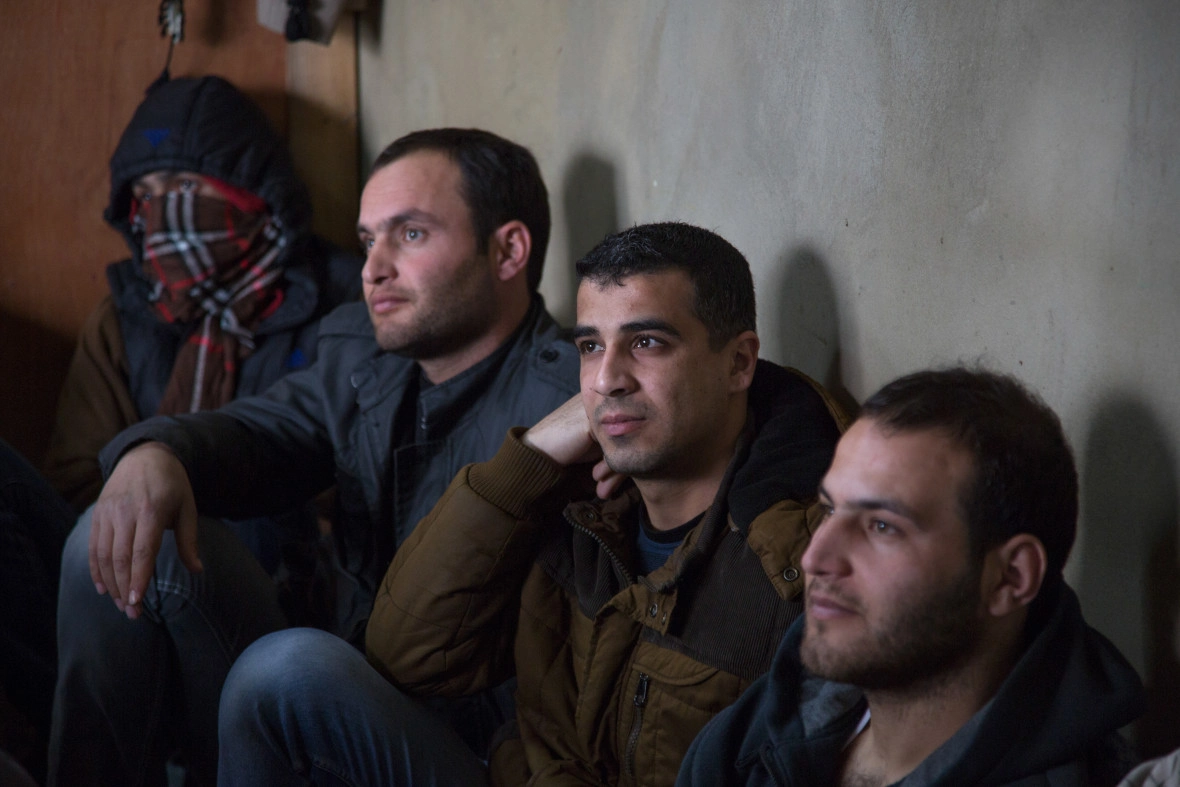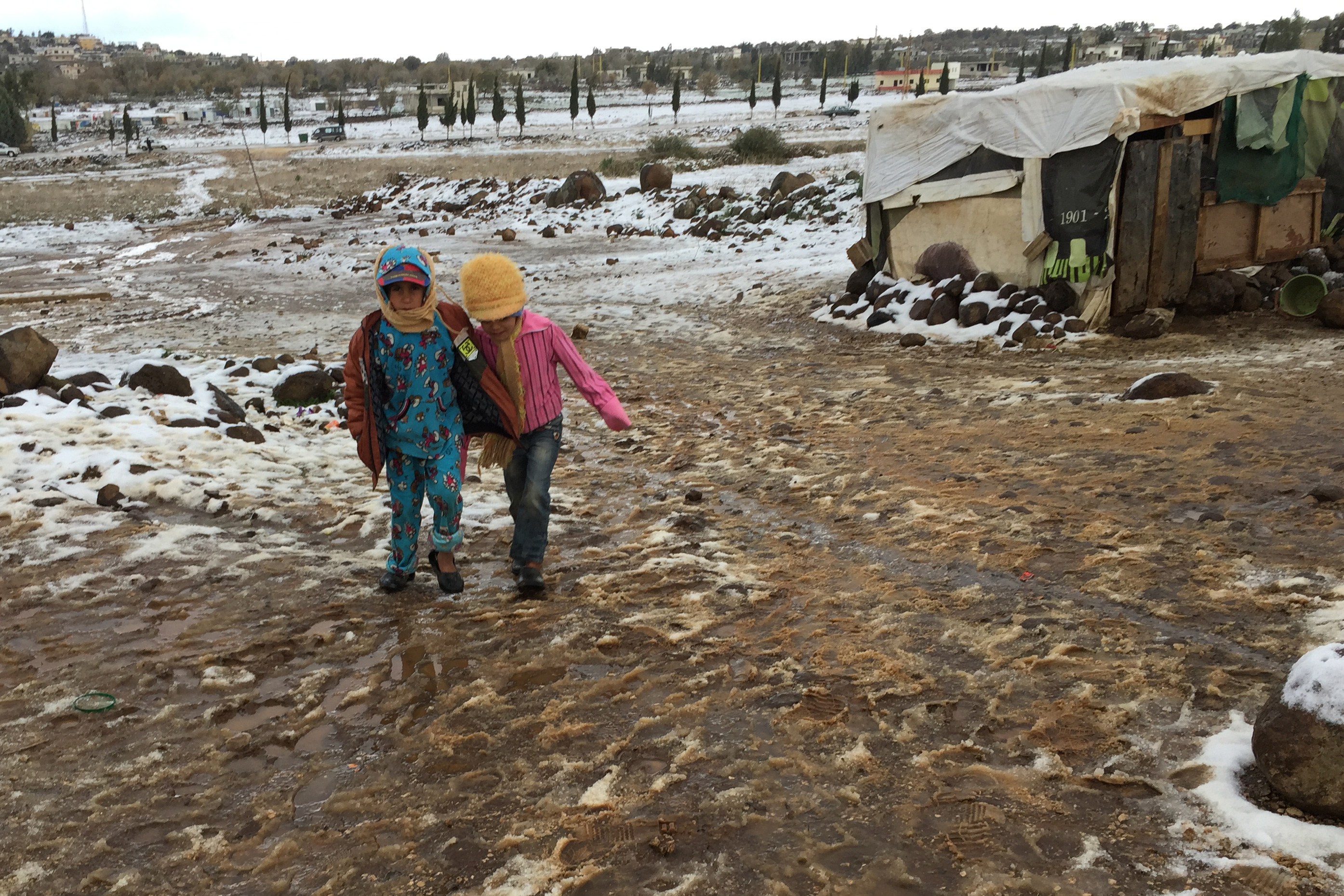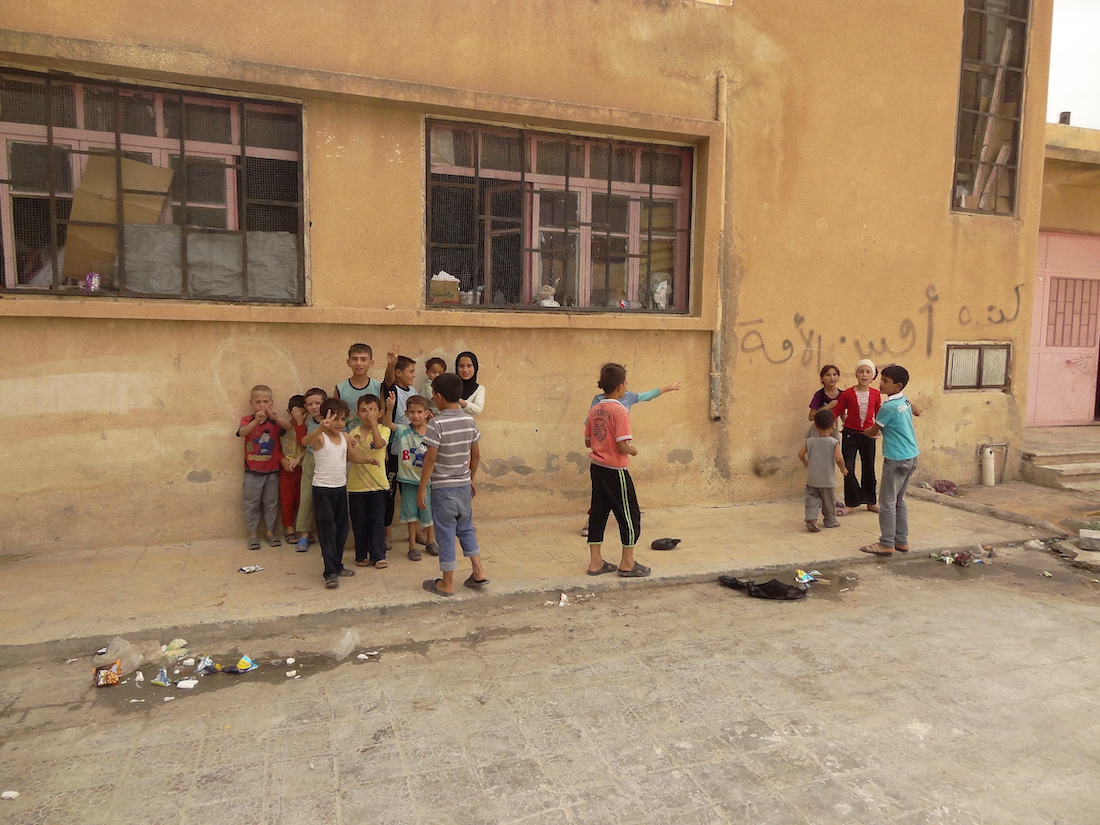News
The Syria crisis, explained
Thirteen years into the humanitarian crisis in Syria, here’s what you need to know.
Read MoreTen years in, and the Syrian conflict shows no sign of letting up. We talk with civilians living in internal displacement and abroad as refugees about the uncertain future of Syria.
Content Advisory: This story contains descriptions of war and mental health struggles.
“I thought we’d be here for just a month,” Fatima* told us in 2018 from her makeshift home in an informal tented settlement (ITS) in northern Lebanon. The mother of four was forced to relocate herself and her children when armed forces had surrounded their village in Syria. No one could get out. Then the bombs began. After four failed attempts to escape the violence, they were successful.
But refuge came at a cost: When we spoke to Fatima in 2018, her husband was still in their village, unable to join his family. Her parents were there too. “I miss everything,” she said of home. “Living in Syria was bounteous. I liked living near my parents and brothers and sisters.”
“Living in Syria was bounteous.”
In Lebanon, Fatima has struggled to pay rent on a shelter that is in disrepair, with broken boards, infestations of cockroaches, limited water, and winters that are brutal and bitter. Unable to afford the tuition prices, her children remained at home, out of school and with little to do but wait.
What Fatima and her family — along with millions of other Syrians — are waiting for is unclear. This month marks the tenth anniversary of a crisis in Syria brought on by conflict, mass displacement, civilian casualties, the destruction of infrastructure, and other violations of international humanitarian and human rights laws. While many Syrians wish to return home, the road to getting there is less certain in 2021 than it was at the beginning of the crisis.
Concern has worked with Fatima and families like hers, providing wood and shelter kits and building toilets and water points in their communities. While these measures are vital improvements in their daily lives, they’re only one aspect of a compound crisis.
That crisis has only worsened in the last year: Estimates in 2021 indicate 13.4 million people still living in Syria who are in need of humanitarian assistance. An additional 5.5 million Syrian refugees are living in host communities, the majority of which are in neighboring countries such as Türkiye, Lebanon, Jordan, Iraq, and Egypt.

2020 further complicated matters, pushing already-limited resources and coping mechanisms to the brink. Both the escalation of hostilities in northern Syria and the COVID-19 pandemic have limited access for humanitarians still operating in the region. A worsening economic situation, fewer employment opportunities, and a food security crisis have added to the vulnerability of many Syrians still living in-country, who are now facing fewer options. Over 1.5 million internally-displaced Syrians who turned to “last resort” shelters in overcrowded areas live mainly in tents and without access to safe water, food, healthcare, or psychosocial support. As families struggle to cope, women and girls are especially vulnerable to domestic violence. As conditions worsen, many families resort to negative coping mechanisms, such as early and forced marriage.
Crisis knows no borders. Neighboring countries, which are the primary countries of refuge for Syrians, haven’t been spared the compound interest of a decade-long conflict. Lebanon’s population has grown 28% owing to the influx of Syrians seeking refuge. The ongoing consequences of the pandemic, Lebanon’s own critical economic crisis, and last summer’s port explosion in Beirut have disproportionately affected these populations.
“Put yourself in my position: It was because of my family that I came here,” Habib* told us in 2013. Then 59 years old, the father of 10 was living with his wife and children in the basement of an unfinished concrete building. Each family rented a room in the structure for $150 a month. Each room was damp, despite no running water, and had intermittent electricity at best, coupled with holes for windows. “In Syria, I was everything… Here, I am nothing.”
“In Syria, I was everything. Here, I am nothing.”
Many refugees living abroad are unable to find steady work, which has made living conditions like Habib’s the norm rather than the exception for the last decade. When Habib was able to get work for approximately $16 a day, he also faced discrimination as a refugee. “They told me, ‘You’re working under my knees now,’” he said at the time. “But I had to work to feed my family.” Friction with the local community forced the family to relocate to a home that more accurately resembles a prison.
Yet, while things are marginally better, Habib still stressed that freedom from violence and conflict lacked meaning in such conditions. “I sometimes think I would rather die in Syria than stay here and live this life.”
“The difference is between heaven and hell,” echoed 37-year-old Sara*, who lived in a community close to Habib’s.

As parents, Fatima, Habib, and Sara all stressed that their own personal suffering was second to their concerns over their children. “I am always worried for my children that something will happen to them,” Rana* told us from her host community in Lebanon in 2019. Her family fled Syria with the clothes on their backs, and paid all of their savings to simply get out of the country. “I didn’t put my youngest child in school because there is a water canal next to the school and I am afraid that they could fall in and drown.”
For all the pandemic-prompted conversations in the last year about “going back to normal” and “the new normal,” most Syrians under the age of 18 have grown up with a normalization of conflict, volatility, poverty, and displacement that could impact them for the rest of their lives.

Samer* was 14 when the conflict started. When we met him just two years later, still in Syria, he had already accepted that he had lost one of his basic human rights: his education. “I won’t go back to school,” he told us at 16. “I have lost my will now after missing it for two years.” Even if the conflict had ended earlier on, he reasoned that he would be behind in class and that the education system would take much longer to regain its footing. “For my generation and me, the future is not clear.”
“For my generation and me, the future is not clear.”
Since then, a new generation of Syrians was born, reached the age to begin primary school, and has been left to sit on the sidelines. Some, like Layal*, who was 11 when we interviewed her in 2017, were forced to step into parental roles. Despite being a child herself, Layal was the oldest of her siblings and had lost both of her parents. While she was out of school, she worked to ensure that her brothers and sister would have an education while they lived in an informal settlement in Lebanon. Like Samer, she spoke with a voice older than her years; a sign of the trauma caused by crisis and conflict. “It’s so far away, the future,” she said about her own hopes. “Now, I am 11 years old, and I don’t know what I will do when I am 12 years old.”
“Now, I am 11 years old, and I don’t know what I will do when I am 12 years old.”
While these interviews present an insight into the individual stories Concern teams have witnessed and heard over the course of the Syrian conflict, the devastating truth is that they all sound remarkably the same. This underscores the lack of progress on the part of the international community to work towards a peace resolution and repatriation for those who wish to return. The Syrian refugee crisis has worsened as a result of these failures — along with the failure to share the responsibility of resettling Syrian refugees, particularly on the part of high-income countries who closed their borders.

For nearly 20 million Syrians, the last decade has effectively been lost. “It is so difficult for a person accustomed to the culture and society where I was living to just get out and leave everything behind,” Ahmed* told us from his family’s tent in Türkiye a few years ago (these tented settlements have now been closed and most Syrians living in Türkiye are housed in urban areas). “But it was like something imposed on us.… We need to face reality and see what will happen in the future.”
“I wish I had met you in Syria when we had a normal life there,” he said. “You would come to Syria as tourists and have fun there, and I would host you at my house.”
The stress of living in this situation is almost unimaginable, but there really is no alternative. Still, Ahmed like many of his compatriots, also maintains hope for a better future and an ingrained sense of Syrian hospitality. “I wish I had met you in Syria when we had a normal life there,” he said. “You would come to Syria as tourists and have fun there, and I would host you at my house.”
“Bark Allah lak,’ant tahsud ma tazrae,” Victor*, one of Ahmed’s neighbors, told us. In Arabic, it translates to: “May God bless you, you will reap what you sow.”
* All names changed for security purposes.